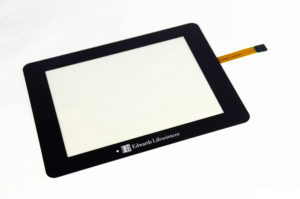
The cover glass is an important part of many touchscreens. It’s the uppermost layer that “covers” the underlying layer. As the name suggests, the cover glass is made of glass. All touchscreens have a top layer. While some of them have a plastic top layer, though, others have a cover glass. What are the benefits of cover glass exactly?
Excellent Optical Clarity
Cover glass offers excellent optical clarity. Both glass and plastic are transparent. Whether a touchscreen has a plastic top layer or a cover glass, you’ll be able to see the images produced by its integrated display (e.g. liquid-crystal display). Touchscreens with a cover glass, however, offer better optical clarity than those with a plastic top layer.
Optical clarity is a measurement of visual clearness. Glass is clearer than plastic. Therefore, cover glass offers better optical clarity. Touchscreens with a cover glass produce clearer and sharper images, making them preferable over those with a plastic top layer.
Protection From Scratches
Cover glass offers protection from scratches. Scratches are common with many types of touchscreens. Touchscreens used in commercial applications, for instance, often succumb to scratches. While there’s no such thing as a completely scratch-proof touchscreen, cover glass can minimize the risk of scratches.
Glass is stronger than plastic.
Supports an Oleophobic Coating
Another benefit of cover glass is support for an oleophobic coating. When producing cover glass for touchscreens, many manufacturers will apply an oleophobic coating to it.
Oleophobic coatings are oil-repelling barriers consisting of an oleophobic liquid. The oleophobic liquid is applied to a touchscreen’s cover glass, after which it will repel oil. Your skin will produce oil naturally. And when you use a touchscreen, you’ll transfer some of these oils to the top layer. An oleophobic coating will promote a clean touchscreen by repelling oil from the cover glass.
What About a Plastic Top Layer?
As you can see, cover glass offers several benefits, some of which include excellent optical clarity, protection from scratches and support for an oleophobic coating. Nonetheless, some touchscreens are designed with a plastic top layer rather than a cover glass.
There are advantages to choosing a touchscreen with a plastic top layer as well. Glass is technically stronger, but plastic offers greater protection against breakage. Touchscreens with a plastic top layer also cost less to produce than those with a cover glass. With a lower production cost, they typically cost less to purchase.
